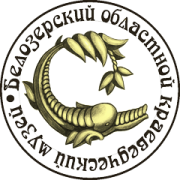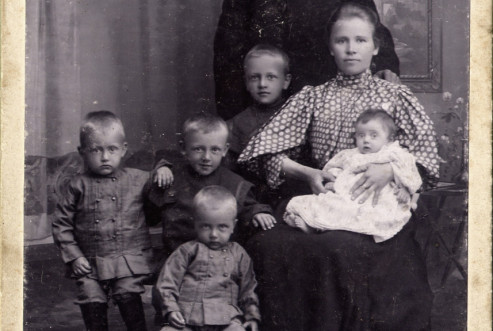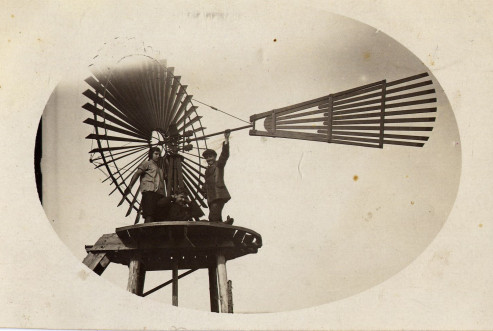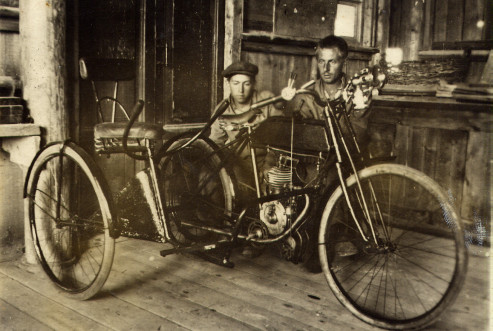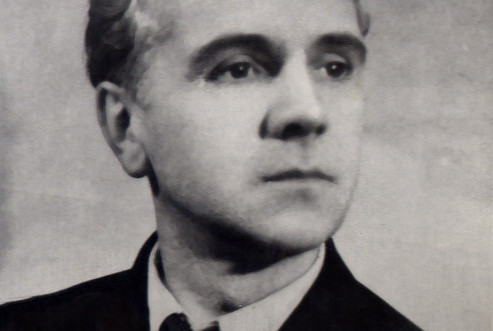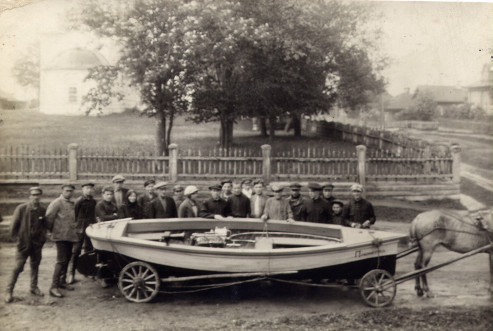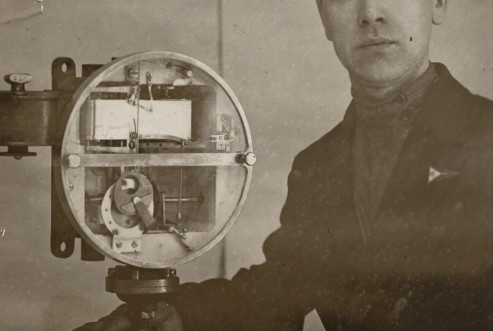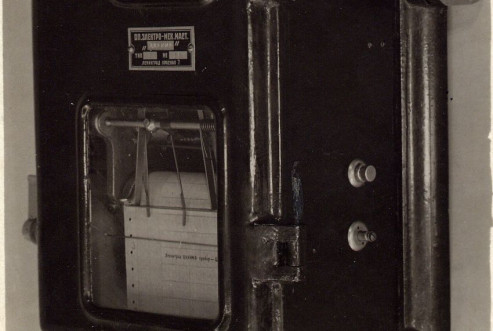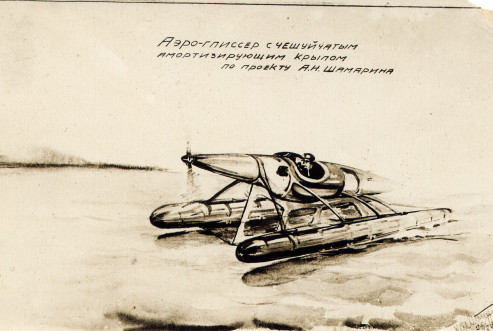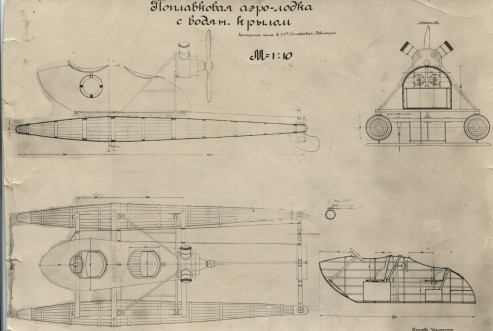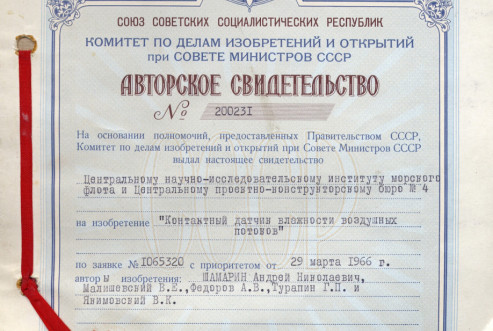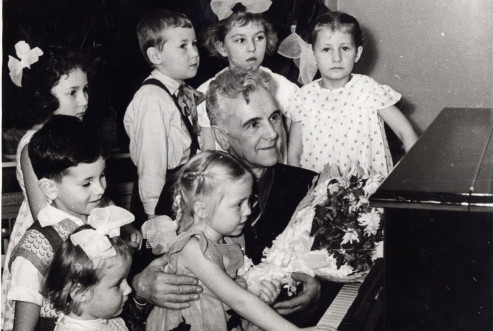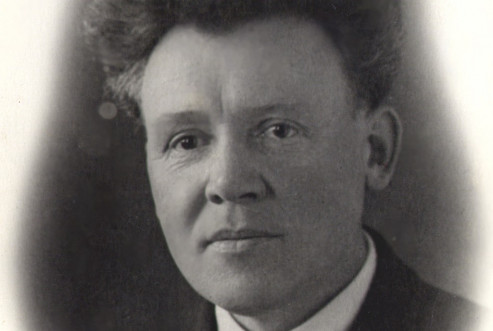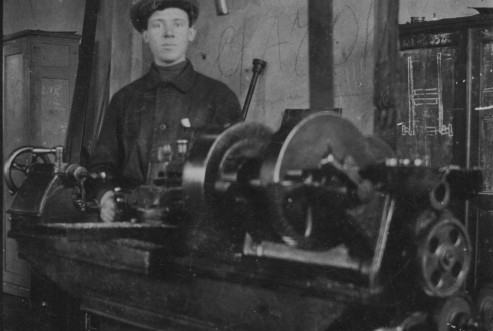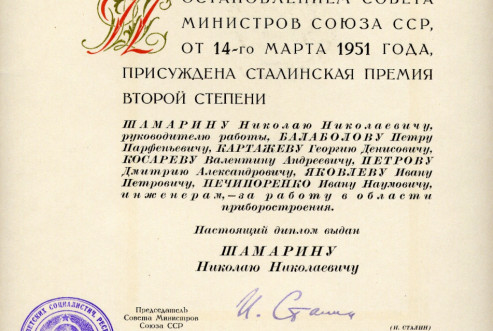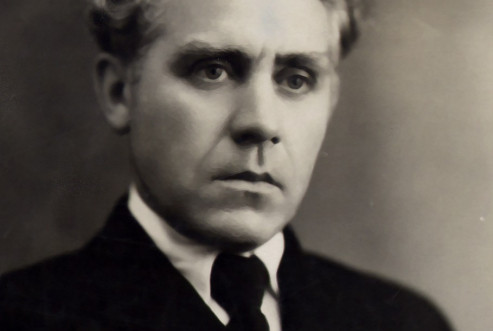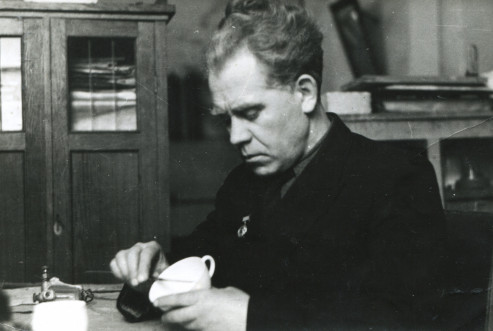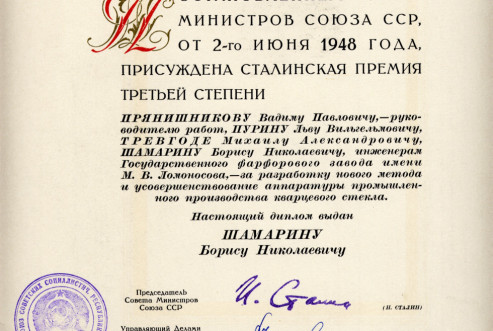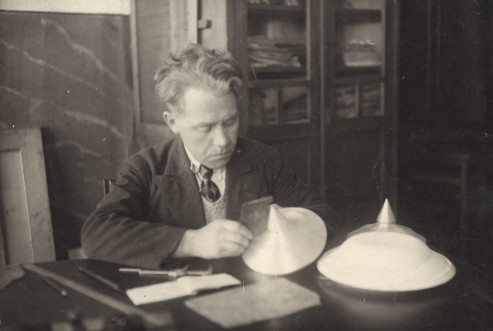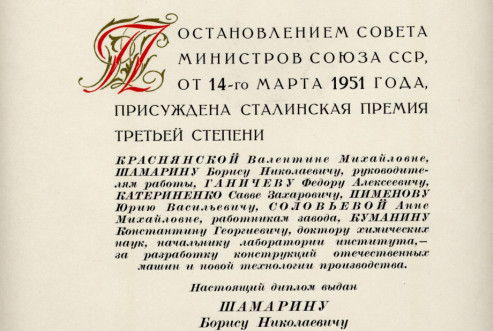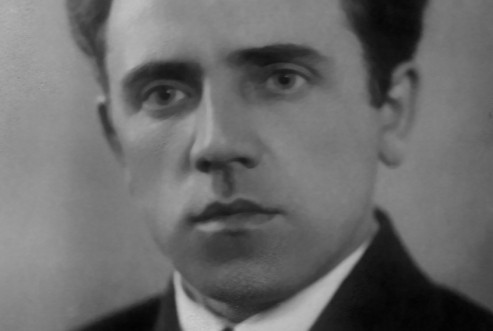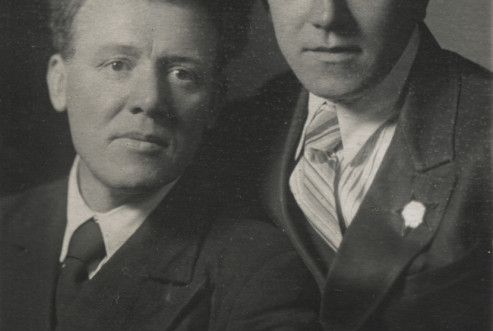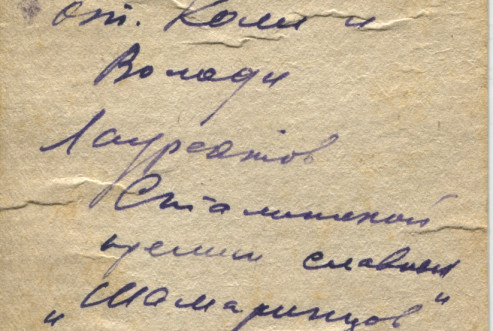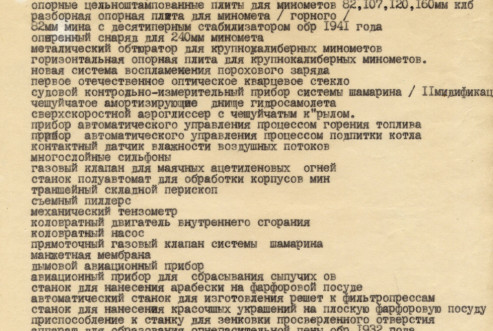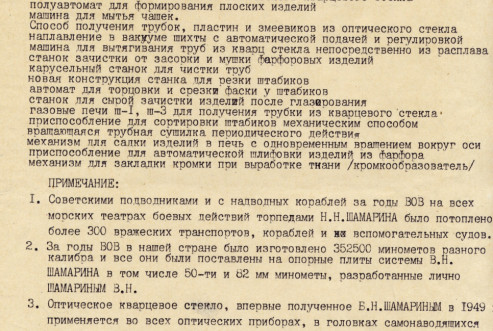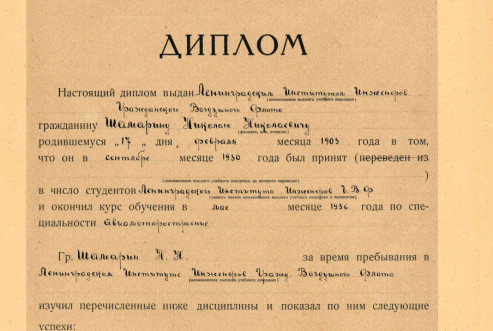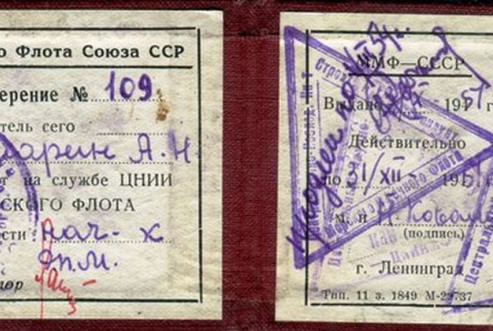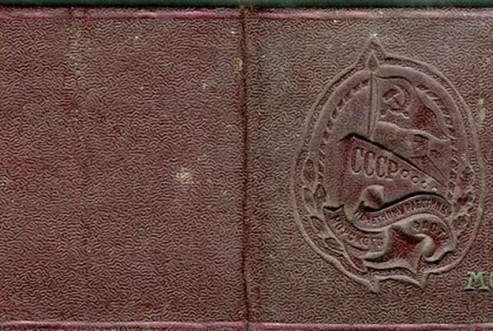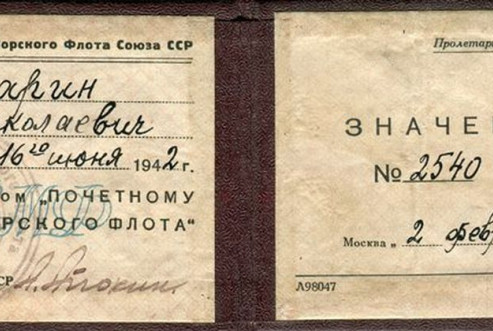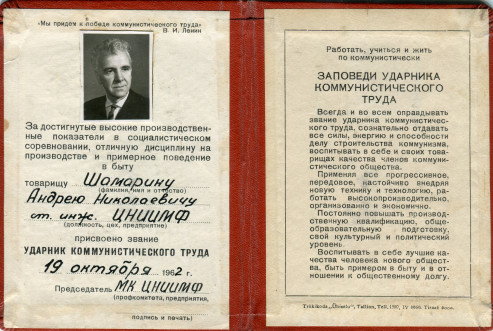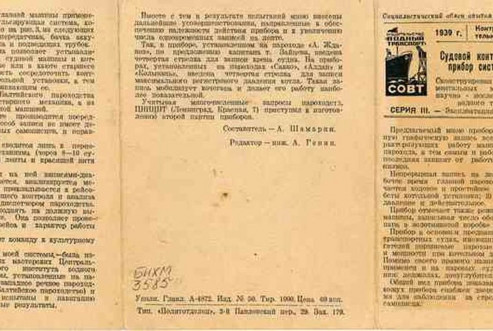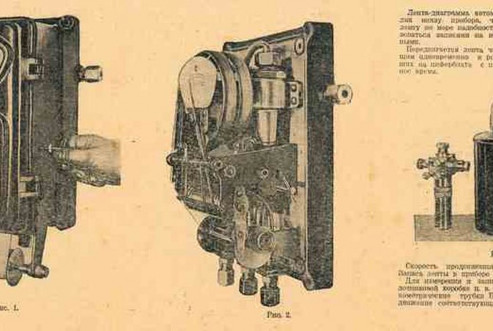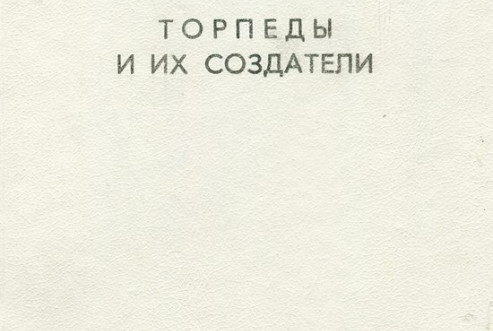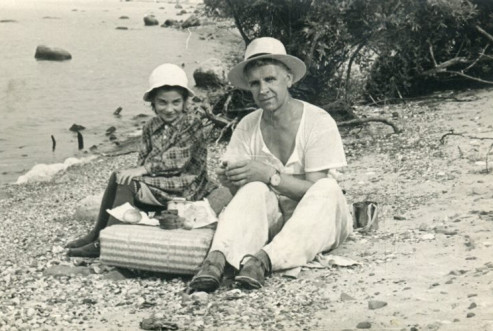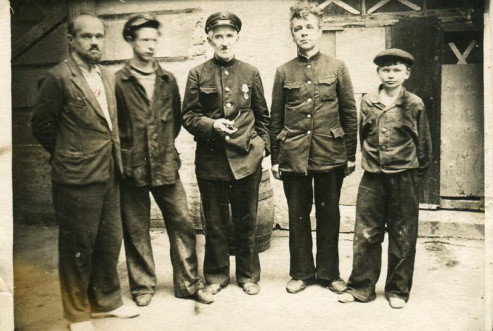Inventors and Designers Brothers Shamarin
Having in mind famous people born in the Belozersk district, one should pay attention to a unique case in world history: four brothers from one family who were outstanding designers and inventors. The brothers Shamarin – Andrey, Nikolay, Boris and Vladimir – and their sisters Tatyana and Susanna were born and raised in a family of Nikolay and Alexandra Shamarins. (Photo 1).
Nikolay Shamarin Sr. was born in a family of a poor civil servant in Belozersk in 1873. When Nikolay was a teenager he surprised citizens of Belozersk after making a steamship (1.5 m long) by hand which he demonstrated on the canal launching it from the bridge. Nikolay worked as a match factory operator in Belozersk and later as a still-house mechanical engineer in the village of Blagoveshcheniye, Kirillov district. Nikolay spent six years to make a turning lathe of unique design. The father had other inventions as well but this handmade lathe played a pivotal role in bringing up the brothers Shamarin as future designers: in their young days they used it to create components of motor-sleighs, bikes, wind mills, boat motors, etc. (Photo 2-3).
In the winter of 1914, Nikolay caught a severe cold and passed away in June 1915. After the father’s death it was the mother and elder son Andrey, 14, who had to take care of their family.
Andrey Shamarin was born in Belozersk in 1901. Andrey had to work at ship repairing yards in Belozersk at an early age already to help his mother raise their family. In 1918, he began working as a coal heaver on the Oshta ship. Later he was a mechanical engineer assistant on ships. When the Belozersk ship maintenance area was extended in 1920, Andrey was transferred to mechanical workshops where he worked as a lathe operator up to 1931. In 1928, Andrey took part in the all-Russia competition among small ship masters (the so-called “Star Run”). Fourteen motor boats and speed boats came there from Moscow, Belozersk, Yaroslavl, Kostroma, Kazan and Penza. Andrey Shamarin finished in Nizhny Novgorod in 84 hours driving his handmade boat called “Pioneer”. (Photo 4-5).
In 1931, Andrey made his first recording device to fix crossing and standing time of a vessel which was further known as the Shamarin ship gauge. This device provoked interest in the Northwest Shipping Agency in Leningrad and Andrey Shamarin was invited to the Central Research Institute of Water Transportation in Leningrad in 1935. In 1940, devices designed by Andrey Shamarin were used by twelve shipping agencies of marine and river fleets. In 1935, Andrey Shamarin received a patent for his first invention known as the flaky shock-proofed bottom of a hydroplane. In 1937, Andrey developed a super speed airboat with a flaky shock-proofed bottom. (Photo 6-9).
In 1941, Andrey Shamarin became Head of research and production workshops of the Northwest Shipping Agency. When the war began, workers of such research and production workshops started fulfilling orders from the Leningrad front and Baltic fleet. During the severe siege of Leningrad, Andrey Shamarin developed a semiautomatic lathe to process mortar shells, trench periscopes and many other things. In the winter of 1942/1943, the research and production workshops adopted production of critical parts for trawler fuel-injected motors and ensured their normal application for military purposes. Andrey Shamarin was awarded the Red Star Order for accomplishing such an important task. (Photo 10).
After the war, Andrey continued improving his ship gauge and making steam power plants automatic and motorized. He developed and introduced a lot of useful ideas and innovations. Many of them were to enhance defensive capacity of our country. Andrey Shamarin passed away in 1972. (Photo 11).
Nikolay Shamarin was born in Belozersk in 1903. He graduated from the Cherepovets technical college in 1922. Nikolay worked as a lathe operator of the ship maintenance area in Belozersk where he showed himself as a qualified specialist. Nikolay worked as a lathe operator at the Pioneer plant in Leningrad after his military service since 1926. He also entered the Civil Air Force Institute, Aircraft Engine Department, in Leningrad. (Photo 12-13).
In 1931, Nikolay, being a second year student, designed a lobe pump and a rotary engine. The both items were recognized as inventions. They were the first items for which Nikolay Shamarin obtained inventor certificates. The Civil Air Force Institute offered him to develop a motor of special application as his final year project.
In 1936, after graduating from the above educational establishment, Nikolay Shamarin entered the Research Institute where he brightly finished his work on the motor and successfully presented his graduation project with the excellent mark in October 1938. Nikolay Shamarin led a team of designers who created an electric ET-80 wakeless torpedo in 1942. Due to wakeless torpedoes and poppet valves used for firing, Soviet submarine soldiers could put on sudden attacks enhancing their military effectiveness significantly. Nikolay Shamarin held positions of Department Director, Chief Designer and Chief Engineer of the Research Institute. Nikolay always worked hard doing his best. Nikolay Shamarin passed away in the prime of creative life at the age of fifty three years. (Photo 14).
Boris Shamarin was born in 1905. After high school, he entered the Cherepovets mechanical college graduating from it as a qualified heat engineer in 1926. Boris was assigned to the Proletarian porcelain plant in the Nizhny Novgorod region where he worked up to 1941 as a mechanical engineer assistant first and then as a designer and Head of the experimental workshop. (Photo 15).
In 1941, Boris Shamarin was appointed as Chief Mechanical Engineer of the porcelain plant in Rechitsy where he worked up to 1946. Later he was transferred to the M.V. Lomonosov plant in Leningrad where he held position of Chief Mechanical Engineer. In 1947, he was appointed to a position of Head of the experimental workshop and Chief Designer of the plant. (Photo 16).
In January 1947, the M.I. Lomonosov plant was to restore quartz production. Boris Shamarin quickly developed original mechanisms to draw transparent quartz tubes and ensured motorized loading and unloading of high frequency furnaces and cutting of quartz items. Led by Boris, all these mechanisms were mounted, put in operation and absolutely proved their value in future. Boris Shamarin was awarded the Stalin Prize in 1948 for his efforts in restoring and ensuring quartz production using a new technical basis. (Photo 17).
Since 1948, Boris Shamarin was engaged in production of optical quartz glass. He developed and manufactured original domestic equipment in a rather short period of time and the first optical quartz glass was produced in 1949. Boris Shamarin was awarded the Stalin Prize again in 1951 for successful fulfillment of the important task set by the government. (Photo 18-19).
In parallel with manufacturing of high transparent quartz glass facing machines, Boris also produced special porcelain parts for the world largest synchrophasotron which was being built in the city of Dubna at that time.
Boris Shamarin was extremely busy during the hard postwar period. Boris’s teammates could not remember when he went on vacation or took a vacation in full. Boris Shamarin passed away one month before his fiftieth anniversary.
Vladimir Shamarin, the youngest brother, was one of leading mortar designers (smooth-bore artillery) in our country. He was born in 1906. After high school, Vladimir, like his elder brothers, entered the Cherepovets technical college. Having graduated from it, he worked as a technician at the Proletarian porcelain plant in the Nizhny Novgorod region. (Photo 20).
After his military service, Vladimir began working as a designer of the Promet plant in Leningrad. There he was a member of a small team which developed devices and apparatuses for different types of degasifying treatment. (Photo 21-22).
From 1936 to 1957, Vladimir Shamarin was engaged in mortar engineering for the Russian national forces and became one of its leading designers. In June 1940, a special mortar engineering department was established with all required production facilities following the government resolution. Vladimir Shamarin was appointed its Head and Chief Designer. Vladimir Shamarin was actively developing new and dedicated mortar weapons both before and after the war which were widely used by the Red Army during the Great Patriotic War in 1941 – 1945. Vladimir Shamarin was awarded the Red Star and Kutuzov Orders and different medals for his fruitful activities in mortar engineering and active participation in their mass production. In 1943, he was awarded the 2nd degree Stalin Prize. (Photo 23-24).
Intense activities affected Vladimir’s health. Following doctor recommendations, he changed his job and switched over to the Research Institute of Textile Engineering in 1957 where he worked more than ten years. Since August 1968, Vladimir Shamarin was a retiree and passed away in 1991.
